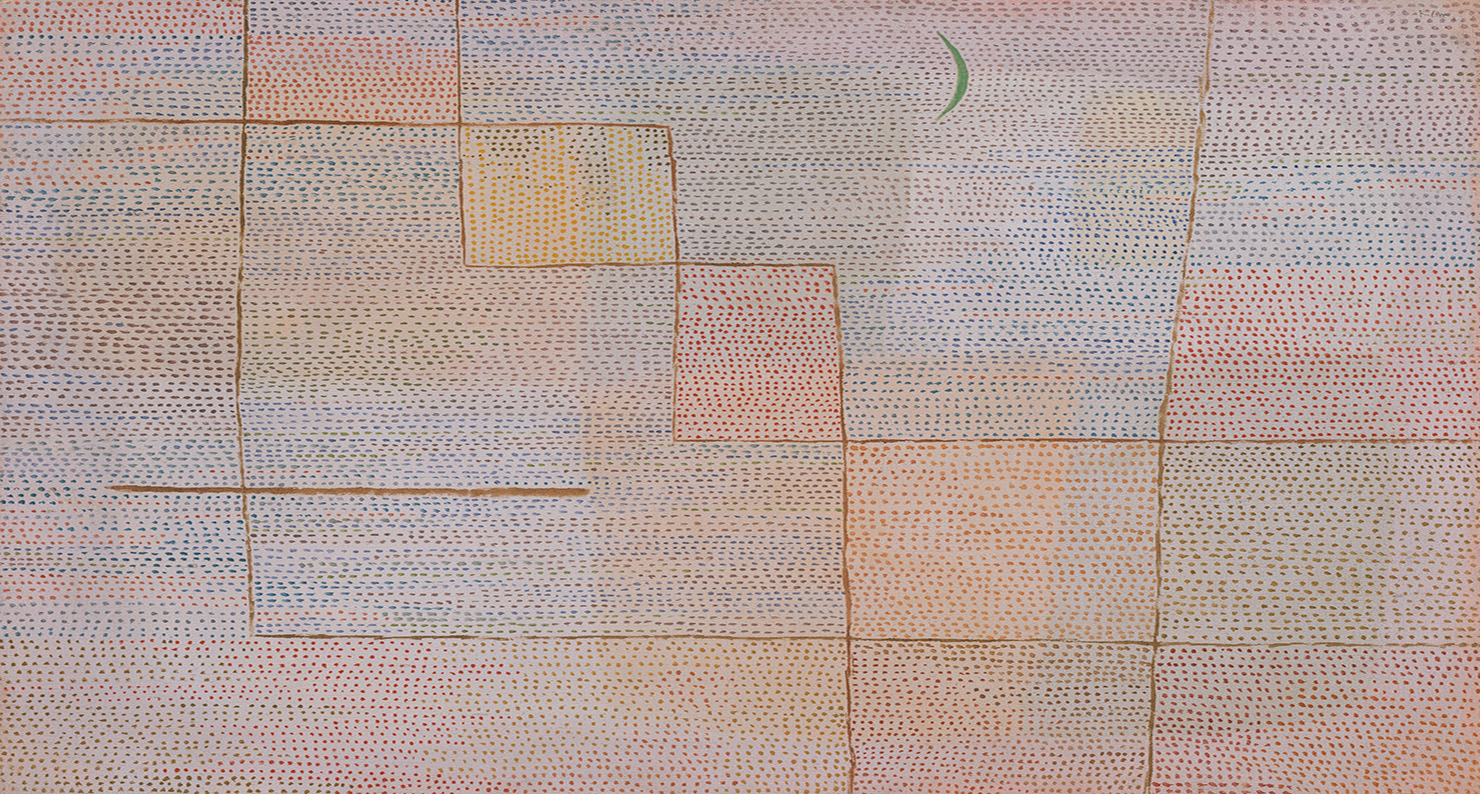
Clarification (detail), by Paul Klee, 1932. The Metropolitan Museum of Art, The Berggruen Klee Collection, 1984.
• “Thoughts and prayers” might seem like an empty gesture in the modern context, but in ancient Greece, its meaning might have had a bit more meat. (JSTOR)
• Phil Klay thinks about war and joy and suffering after remembering reading The Big Book of Martyrs as a child. (The American Scholar)
• “Bob, I know we’re not the first to discover this, but we’d like to confirm, from the crew of America, that the world is round.” Which astronaut on Apollo 17 really took the famous “Blue Marble” photo? (Outside Online)
• Archaeologists have Indiana Jones, historians have Mosul Eye: “He wasn’t a spy. He was an undercover historian and blogger.” (Associated Press)
• Looking at “weird” cartoons as a challenge to the minstrel-tradition-reliant cartoons of the mid-twentieth century. (Vulture)
• Where did that paint come from? You may not want to know—or try to re-create the process of making it: “An artist had to be a chemist—and he had to have a strong stomach. He would have known, writes Jelley, ‘the useful qualities of wine, ash, urine, and saliva.’ ‘Do not lick your brush or spatter your mouth with paint,’ warned Cennini.” (Literary Review)
• A storage room at a museum on the Harvard campus is filled with masks modeled from the faces of Native American POWs. Where should they go? What should be done with them? “I noticed that one of the Ft. Marion life-masks, that of an Arapaho man named White Bear, had indeed been brought to a diorama-ready state, complete with hair and full color painting, including, most startlingly, his bright eyes. But, to me, the other masks, though still in the form of unpainted, unadorned casts, were far more lifelike, even though, or, especially, because their eyes are shown closed. In seeing those shuttered eyelids, one is brought to the exact moment in the summer of 1877, in a muggy Florida prison, when these men, and a few women, sat with a tight cap over their heads and straws up their noses as Mills worked them over.” (Topic)
• Thinking about wildfires as Los Angeles burns: “The origins of how we understand wildfire’s behavior, why it creeps over one landscape and sprints across another, date back to 1972, when a research engineer named Richard Rothermel at Missoula, Montana’s Northern Forest Fire Laboratory wrote out a series of 13 mathematical equations.” (Los Angeles Magazine)